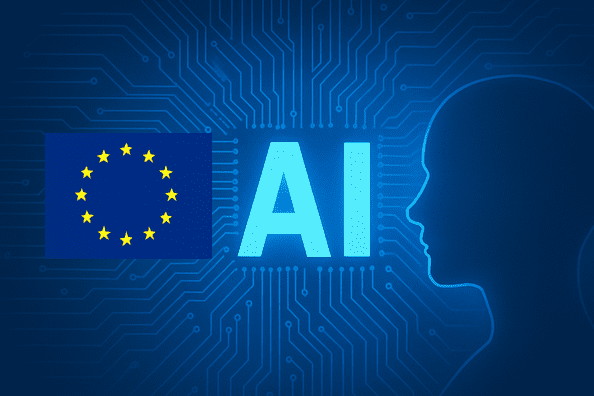The European Union’s Artificial Intelligence Act represents a seismic shift in the global regulatory landscape, fundamentally transforming how businesses must approach AI development, deployment, and governance. As the world’s first comprehensive AI regulation, the Act has established a new paradigm that extends far beyond European borders, creating ripple effects that impact AI companies worldwide. With enforcement phases already underway and substantial penalties looming—up to €35 million or 7% of global annual revenue—organizations can no longer afford to treat compliance as an afterthought.
The Act’s risk-based framework creates a sophisticated taxonomy of AI systems, ranging from completely prohibited applications to minimal-risk implementations requiring basic transparency measures. This nuanced approach reflects the EU’s commitment to fostering innovation while protecting fundamental rights, but it also demands that companies develop equally sophisticated compliance strategies. As general-purpose AI models face their first major regulatory milestone in August 2025, and high-risk systems prepare for comprehensive oversight requirements by 2026, the time for reactive compliance has passed.
The Risk Classification System: Understanding Where Your AI Fits
The EU AI Act operates on a four-tier risk classification system that determines the regulatory obligations for each AI system. This framework serves as the foundation for all compliance efforts, making accurate risk assessment the critical first step for any organization. Unacceptable risk AI systems are completely banned as of February 2, 2025, including social scoring mechanisms, workplace emotion recognition systems, and AI that uses subliminal techniques to manipulate human behavior. These prohibitions apply universally—both to development and mere use of such systems—creating immediate liability for organizations that haven’t conducted thorough risk assessments.
High-risk AI systems face the most stringent regulatory requirements and represent the category where most businesses discover unexpected compliance obligations. These systems include AI used in recruitment processes, credit scoring, healthcare diagnostics, and law enforcement applications. The requirements extend far beyond simple documentation, encompassing comprehensive risk management systems, human oversight protocols, detailed data governance frameworks, and mandatory conformity assessments before market placement. Organizations often underestimate the scope of this category, particularly when AI is embedded within seemingly routine business processes.
Limited risk systems primarily involve transparency obligations, requiring clear disclosure when users interact with AI systems like chatbots or view AI-generated content. While these requirements may seem straightforward, they demand systematic implementation across all customer touchpoints and user interfaces. Minimal risk systems face virtually no additional regulatory requirements but must still comply with existing laws and may be subject to voluntary codes of conduct.
The classification process itself has become a critical business function, requiring ongoing assessment as AI systems evolve and regulatory interpretations develop. Companies are discovering that their risk profiles can change based on context of use, integration with other systems, and updates to the underlying AI models.
Timeline and Enforcement: Critical Deadlines for Compliance
The EU AI Act follows a carefully orchestrated rollout designed to give businesses time to adapt while maintaining regulatory momentum. The February 2, 2025 milestone marked the beginning of active enforcement, implementing the ban on unacceptable risk AI systems and introducing mandatory AI literacy requirements for employees involved in AI development, deployment, or oversight. This AI literacy requirement extends beyond basic training—organizations must demonstrate that relevant staff possess adequate knowledge of AI risks, mitigation strategies, and governance principles appropriate to their roles.
The August 2, 2025 deadline represents a pivotal moment for general-purpose AI model providers. The European Commission has made clear there will be no delays or extensions, despite industry pressure for additional transition periods. GPAI models must now meet comprehensive transparency requirements, including detailed technical documentation, copyright compliance policies, and registration with the European AI Office for models exceeding the systemic risk threshold. The threshold for systemic risk classification—models trained with more than 10^25 floating-point operations—captures most frontier AI models including GPT-4, Claude, and Gemini variants.
August 2, 2026 marks full implementation for high-risk AI systems, requiring complete documentation packages, human oversight mechanisms, and post-market monitoring systems. The final milestone comes in August 2027, when extended transition periods for certain high-risk AI systems embedded in regulated products expire. This timeline creates a cascading series of compliance obligations that require coordinated preparation across multiple business functions.
Enforcement mechanisms are already operational, with national supervisory authorities preparing comprehensive oversight programs and the European AI Office actively engaging with GPAI model providers. The penalty structure reflects the seriousness with which regulators view non-compliance, with maximum fines structured to ensure meaningful deterrence even for the largest technology companies.
The General-Purpose AI Code of Practice: A New Compliance Framework
The General-Purpose AI Code of Practice, published on July 10, 2025, represents a groundbreaking approach to AI regulation, offering the first comprehensive guidance for compliance with GPAI obligations. Developed through extensive stakeholder consultation involving nearly 1,000 participants—including model developers, academics, safety experts, and civil society organizations—the Code provides practical implementation guidance for the abstract legal requirements in the AI Act.
The Code’s three-chapter structure addresses transparency, copyright, and safety obligations with unprecedented detail. The transparency chapter introduces standardized model documentation forms that capture essential information about model architecture, training methodologies, intended use cases, and capability assessments. This documentation must be maintained and updated throughout the model’s lifecycle, creating ongoing compliance obligations that extend far beyond initial deployment.
Copyright compliance has emerged as a particularly complex area, requiring GPAI providers to implement comprehensive policies addressing training data provenance, intellectual property rights, and content licensing. The requirements extend to disclosure of copyrighted materials used in training, implementation of content filtering mechanisms, and ongoing monitoring for copyright violations in model outputs. This creates substantial operational overhead and potential liability exposure that many organizations are still evaluating.
The safety and security chapter applies exclusively to GPAI models with systemic risk, establishing comprehensive risk management frameworks, mandatory safety testing protocols, and incident reporting requirements. These provisions require continuous monitoring of model capabilities, implementation of tiered risk thresholds, and proactive safety measures as models approach potentially dangerous capability levels. The emphasis on external auditing and independent safety assessments represents a new paradigm in AI oversight that will likely influence global regulatory approaches.
While adherence to the Code is technically voluntary, the European Commission has indicated that compliant organizations will receive favorable treatment in enforcement actions and simplified compliance pathways. Conversely, organizations choosing alternative compliance approaches face more intensive regulatory scrutiny and potentially higher enforcement risks.
Financial Implications and Business Impact
The financial implications of EU AI Act compliance extend far beyond direct penalty exposure, creating comprehensive business impacts that organizations are only beginning to understand. The Act’s three-tiered penalty structure—ranging from €7.5 million to €35 million, or 1% to 7% of global annual turnover—establishes meaningful deterrence even for large technology companies. However, direct penalties represent only the most visible component of compliance costs.
Compliance infrastructure development requires substantial upfront investment in governance systems, documentation frameworks, risk assessment capabilities, and monitoring technologies. Organizations are discovering that effective compliance demands dedicated staffing, specialized legal expertise, technical infrastructure upgrades, and ongoing operational overhead that can represent significant percentage of AI-related expenditures. The complexity of requirements, particularly for high-risk systems and GPAI models, often necessitates external consulting expertise and specialized compliance tools that add to overall program costs.
Reputational risk represents an equally significant but less quantifiable exposure. Non-compliance events can trigger regulatory investigations, negative media coverage, and stakeholder confidence erosion that impacts market valuation and business relationships. In today’s environment, where AI governance has become a competitive differentiator and stakeholder expectation, compliance failures can undermine years of reputation building and market positioning efforts.
Market access implications create strategic business considerations that extend beyond European operations. The “Brussels Effect” phenomenon—where EU regulations become de facto global standards—means that non-compliance can limit access to other markets and partnership opportunities. Organizations are increasingly treating EU AI Act compliance as a global business requirement rather than a regional regulatory obligation.
Operational efficiency gains represent the positive side of compliance investment. Organizations implementing comprehensive AI governance frameworks often discover improved system reliability, better risk management capabilities, enhanced decision-making processes, and stronger stakeholder trust. These benefits can offset compliance costs while creating sustainable competitive advantages in an increasingly regulated environment.
Implementation Strategies for Sustainable Compliance
Successful EU AI Act compliance demands a strategic approach that integrates regulatory requirements with business objectives while building sustainable governance capabilities. Leading organizations are adopting comprehensive implementation frameworks that address immediate compliance needs while establishing long-term competitive advantages through trustworthy AI practices.
Governance framework development serves as the foundation for all compliance activities, requiring clear role definitions, accountability structures, and decision-making protocols. Organizations are establishing AI steering committees that include representatives from legal, compliance, technology, and business functions to ensure coordinated oversight of AI initiatives. These cross-functional teams bridge the gap between technical implementation and regulatory requirements while fostering organizational alignment around responsible AI principles.
Risk assessment methodologies have evolved beyond simple classification exercises to become sophisticated business processes that evaluate AI systems throughout their lifecycles. Effective risk assessment encompasses technical evaluation, contextual analysis, impact assessment, and ongoing monitoring to capture changes in risk profiles as systems evolve. Organizations are implementing automated risk monitoring tools that provide real-time visibility into AI system performance and compliance status while flagging potential issues before they become regulatory violations.
Documentation and audit trail systems represent critical compliance infrastructure that must balance regulatory requirements with operational efficiency. Leading organizations are implementing integrated documentation platforms that capture required information throughout the AI development lifecycle while minimizing administrative burden on development teams. These systems provide automated compliance reporting, audit trail generation, and regulatory submission capabilities that streamline ongoing compliance obligations.
Training and competency development programs address the AI literacy requirements while building organizational capability for sustainable compliance. Effective programs provide role-specific training that addresses relevant regulatory requirements, ethical considerations, and practical implementation guidance. Organizations are discovering that comprehensive AI literacy programs improve not only compliance outcomes but also system quality, risk management effectiveness, and innovation capabilities.
Technology and tool integration enables scalable compliance management while reducing manual overhead and human error risks. Organizations are implementing AI governance platforms that provide integrated risk assessment, monitoring, documentation, and reporting capabilities. These platforms often include automated compliance checking, real-time performance monitoring, and predictive analytics that help organizations stay ahead of potential compliance issues.
Global Implications and Strategic Considerations
The EU AI Act’s influence extends far beyond European borders, establishing precedents that are shaping global AI governance approaches and creating strategic imperatives for organizations worldwide. As other jurisdictions develop their own AI regulations—including proposed U.S. federal legislation, regulatory guidance from financial services authorities, and emerging frameworks in Asia-Pacific regions—the EU Act serves as a foundational reference that influences regulatory design and industry expectations.
Regulatory harmonization opportunities are emerging as international bodies work to align AI governance approaches while maintaining jurisdictional sovereignty. Organizations that proactively align with EU standards often find themselves better positioned for compliance with emerging regulations in other markets, creating operational efficiencies and reducing compliance complexity. The emphasis on risk-based approaches, transparency requirements, and governance frameworks in the EU Act reflects broader international consensus on AI regulatory principles.
Competitive differentiation strategies increasingly center on trustworthy AI capabilities that exceed minimum compliance requirements. Organizations that invest in comprehensive AI governance frameworks, transparent decision-making processes, and proactive risk management often discover market advantages through enhanced stakeholder trust, improved partnership opportunities, and preferential treatment from investors and customers who prioritize responsible AI practices. The EU Act provides a framework for demonstrating these capabilities in credible, measurable ways.
Innovation and growth considerations require balancing regulatory compliance with continued technological advancement and market competitiveness. The EU’s approach emphasizes fostering innovation within ethical guardrails rather than constraining technological development, but organizations must navigate this balance carefully to avoid stifling innovation while ensuring compliance. Successful strategies integrate compliance requirements into innovation processes from the outset rather than treating them as constraints to work around.
The global regulatory landscape continues evolving rapidly, with new requirements, guidance documents, and enforcement priorities emerging regularly. Organizations must maintain awareness of these developments while building adaptive governance capabilities that can accommodate changing requirements without fundamental restructuring of compliance programs. This demands ongoing investment in regulatory monitoring, stakeholder engagement, and governance system flexibility that can accommodate new requirements as they emerge.
The EU AI Act represents more than regulatory compliance—it’s a transformative framework that is reshaping how organizations approach AI development, deployment, and governance globally. Companies that embrace this transformation and invest in comprehensive compliance capabilities will find themselves not only meeting regulatory requirements but building sustainable competitive advantages in an increasingly regulated and scrutinized AI landscape. The organizations that thrive in this new environment will be those that recognize compliance not as a constraint but as an opportunity to demonstrate leadership in trustworthy AI development and deployment.



